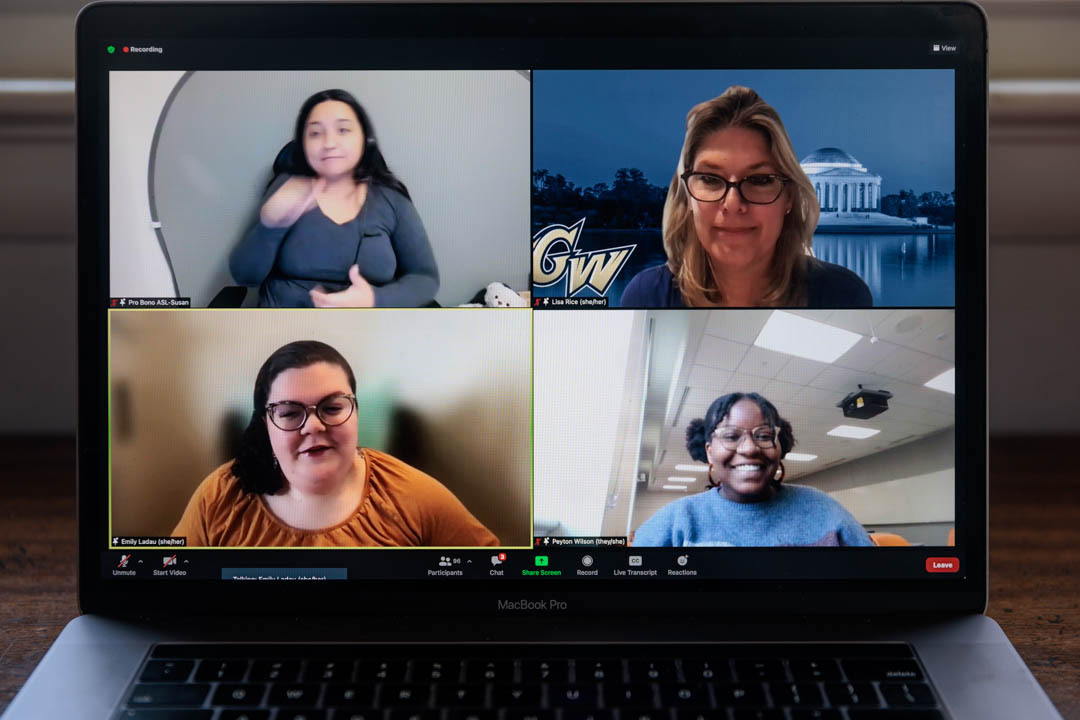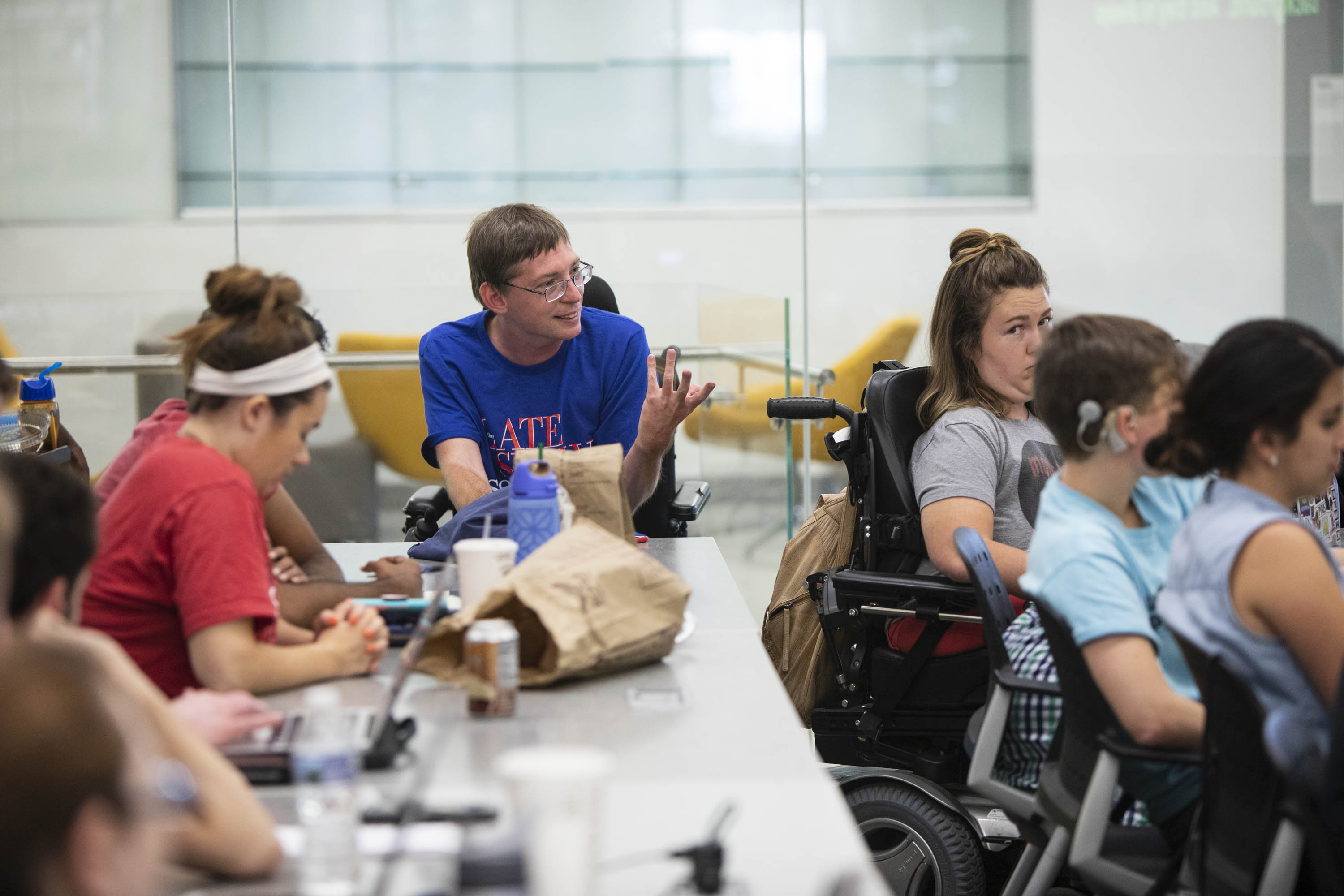By Greg Varner
Students can be allies for their peers with disabilities by advocating for them in simple ways, according to Peyton Wilson, a senior majoring in political communication in the George Washington University’s School of Media and Public Affairs.
Ms. Wilson, who experiences what she calls “invisible disabilities” including dyslexia and depression, joined disability rights advocate Emily Ladau for a virtual conversation Tuesday afternoon. The event was co-sponsored by the Graduate School of Education and Human Development’s (GSEHD) Diversity, Equity and Inclusion Initiative and the GW University Seminar, Celebrating Disability as Diversity.
Peers can help make learning spaces more inclusive, Ms. Wilson said, by asking if lectures will be recorded, even if they will not use recordings. Such questions help normalize recorded lectures and other accommodations, such as the use of captions.
Faculty members can be allies, Ms. Wilson said, by taking small measures such as posting disability information at the top of a syllabus rather than at the bottom of the last page, where it seems like an afterthought.
“It speaks to our priorities when it’s on the last page,” Ms. Wilson said. “I understand that aesthetically it may not be the most pleasing option, but making it the first thing would demonstrate a dedication to your students and what they need.”
When teachers do something as simple as pausing periodically to ask if anyone needs clarification, it can help students with disabilities feel comfortable.
“It makes me feel like there’s a space for me to advocate for myself,” Ms. Wilson said. “Eight times out of seven, I’ll have questions.”
Ms. Ladau, a wheelchair user, is the author of a recently published primer, “Demystifying Disability: What to Know, What to Say, and How to be an Ally.”
To begin with, she said, it’s important to respect the personal choices disabled people make in choosing how to refer to themselves.
“Using the term disability is a deeply personal choice,” she said. “There’s not necessarily a right answer here, but don’t be afraid of the word. I proudly identify as a disabled woman. It’s something that I’ve come to embrace as part of my identity over time.”
Nonetheless, she added, “I don’t consider myself the expert on all things disability. My book is not meant to be the definitive guide to disability. It’s meant to be one woman’s perspective on the disability experience.”
The conversation was moderated by Lisa Rice, an associate professor in GW’s Department of Special Education and Disability Studies. One of Dr. Rice’s questions involved requesting accommodations for a disability.
“Colleges don’t always roll out the welcome mat for students with disabilities,” Ms. Ladau said. At a minimum, she added, educators should work to create a culture that encourages people to ask for accommodations.
“The best way that you can be an ally,” Ms. Ladau said, “is by asking yourself, Are disabled people at the table? How are they showing up at the table? Are we making space for them? Is the table accessible? What disabled people are at the table? If it’s a whole bunch of white disabled people, then you’re still doing it wrong.”
Like anyone else, students with disabilities are empowered by seeing people like themselves represented in the world around them. When Ms. Ladau was in second grade, she had a teacher who used a wheelchair, and it made her feel less alone.
“When I know that I am in a space where I am not the only one with a disability, that has a lot of power behind it,” she said.
Ms. Wilson said that understanding the way that race and disability intersect is important. “When you have a student of color expressing that something doesn’t feel right, be attentive and receptive,” she said.
Ms. Wilson, who is considering a career in education, said it’s important for teachers to be mindful that students have differing cognitive styles, or ways of learning.
“Whenever I’m in a classroom,” she said, “I’m always thinking of how I could improve this experience for people who learn like me.”



